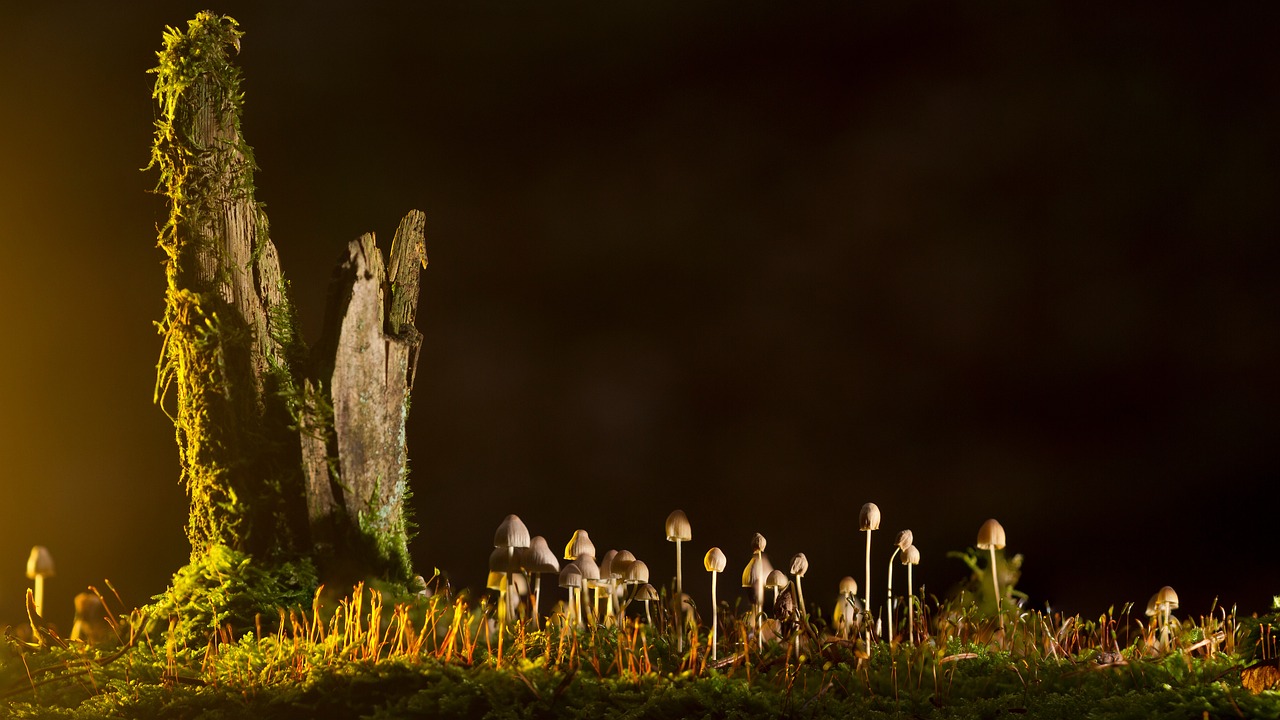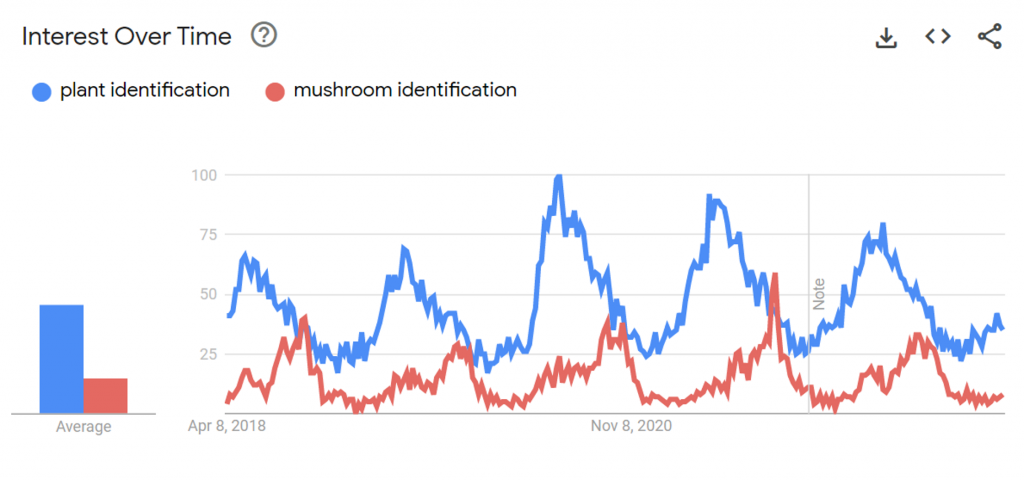Meet the new Mushroom ID!
We are pleased to announce the beta release of a new mushroom identification API.
The new API can identify 3,100 species of fungi (including lichens and related organisms such as slime molds) and includes enhanced information that has been carefully selected and prepared based on the needs of people interested in mushroom identification. Read this article to find out why we love our new product, what benefits it brings, and what our next mushroom plans are.

Why mushrooms?
Although the Plant.id API can already identify mushrooms we have decided to create a new API that specializes solely in mushroom identification. This decision was based on our research into the popularity of mushroom identification and the realization that there are some specific needs in the community of mushroom hunters.
By focusing on mushrooms, we have been able to improve the accuracy and add more mushroom-specific information. This helps end-users to identify mushrooms more reliably and decide how to use them… or rather not.

Google Trends showing the popularity of searches related to mushroom identification and plant identification during past 5 years
Advantages of Mushroom ID
See the table below for a full comparison of Mushroom ID and the Plant.id API. Some of the best improvements include:
- more species: the new API contains twice as many mushroom species
- higher accuracy
- specific content: such as characteristics that help to confirm the suggestion (e.g. spore print color) and expanded edibility information.
| Mushroom ID | Plant.id | |
|---|---|---|
| mushroom species | 3,100 | 1,300 |
| TOP 3 accuracy* | 70.8% | 47.1% |
| TOP 1 accuracy* | 59.1% | 36.1% |
| similar images | ✔️ | ✔️ |
| common names | ✔️ | ✔️ |
| edibility | extended information specific to mushrooms, differentiated by types (e.g. edible when cooked, poisonous) | edible parts |
| URL | ✔️ | ✔️ |
| taxonomy | ✔️ | ✔️ |
| fungi characteristics | ✔️ | ❌ |
| look-alike species | ✔️ | ❌ |
| wiki description and images | coming in summer 2023 | ✔️ |
| synonyms | ✔️ | ✔️ |
| gbif id | ✔️ | ✔️ |
| propagation methods | ❌ | ✔️ |
| watering | ❌ | ✔️ |
| localization | ✔️ | ✔️ |
| psychoactive properties | ✔️ | ❌ |
* The accuracy was measured and compared on the dataset from Mushroom Observer.
More coming soon!
We still want to add some features and content not currently available in Mushroom ID. For example wiki description and wiki images are expected to be added in the summer 2023, just before the main mushroom season! On the other hand, some information specific to plants, such as propagation methods and watering details, were ommited as they are not relevant for mushroom identification.
Further we are planning the following improvements:
- improving the model for even greater accuracy
- adding more mushroom species
- adding new content (such as seasonality and geographic distribution)
- content coverage improvements.
Let us know at business@flowerchecker.com if you have any ideas or questions about Mushrooom ID.
Illustration of the differences in the provided information
Here is an example of the (plant_)details part of the response for the same image of Amanita muscaria included in Mushroom ID and Plant.id API. Note that some of the missing information (such as wiki description and images) will be added later into the Mushroom ID API.
Mushroom ID
"details": {
"common_names": [
"Fly agaric"
],
"taxonomy": {
"genus": "Amanita",
"order": "Agaricales",
"family": "Amanitaceae",
"phylum": "Basidiomycota",
"kingdom": "Fungi"
},
"url": "https://en.wikipedia.org/wiki/Amanita_muscaria",
"rank": "species",
"edibility": "poisonous",
"characteristic": {
"hymenium type": "lamella",
"stipe character": "ring and volva stipe",
"spore print_color": "white",
"mushroom cap shape": "flat mushroom cap or convex mushroom cap",
"hymenium attachment": "free hymenium attachment",
"mushroom ecological type": "mycorrhiza"
},
"look_alike": [
{
"url": "https://en.wikipedia.org/wiki/Amanita_parcivolvata",
"entity_id": "gbif:8338709",
"name": "Amanita parcivolvata"
},
{
"url": "https://en.wikipedia.org/wiki/Amanita_caesarea",
"entity_id": "gbif:5240269",
"name": "Amanita caesarea"
},
{
"url": "https://en.wikipedia.org/wiki/Amanita_regalis",
"entity_id": "gbif:5240248",
"name": "Amanita regalis"
}
],
"psychoactive": true,
"gbif_id": "8168319",
"language": "en"
}Plant.id
"plant_details": {
"common_names": [
"fly agaric",
"fly amanita"
],
"url": "https://en.wikipedia.org/wiki/Amanita_muscaria",
"name_authority": "Amanita muscaria (L.) Lam., 1783",
"wiki_description": {
"value": "Amanita muscaria, commonly known as ...",
"citation": "https://en.wikipedia.org/wiki/Amanita_muscaria",
"license_name": "CC BY-SA 3.0",
"license_url": "https://creativecommons.org/licenses/by-sa/3.0/"
},
"taxonomy": {
"class": "Agaricomycetes",
"family": "Amanitaceae",
"genus": "Amanita",
"kingdom": "Fungi",
"order": "Agaricales",
"phylum": "Basidiomycota"
},
"wiki_image": {
"value": "https://plant-id.ams3.cdn.digitaloceanspaces.com/plant_id_knowledge_base/2eb/ad87c493137cc89d68c6c3df3bb89.jpg",
"citation": "Onderwijsgek",
"license_name": "CC BY-SA 3.0",
"license_url": "https://creativecommons.org/licenses/by-sa/3.0/"
},
"synonyms": [],
"gbif_id": "8671098",
"edible_parts": [
"mushroom"
],
"propagation_methods": null,
"watering": null,
"language": "en",
"scientific_name": "Amanita muscaria",
"structured_name": {
"genus": "amanita",
"species": "muscaria"
}
},
